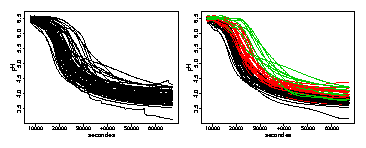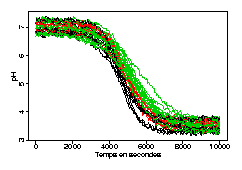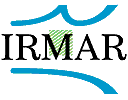Research activities
The reading group is concerned with discrimination and classification for functional data. It aims to construct suitable methods in this framework and to analyze their statistical properties (convergence, rate of convergence, asymptotic law).
This group meets fortnightly, room N210 at UHB ( cf
program).
Head: A.
Guyader.
Members
F. Cérou, P.A. Cornillon, D. Dehay, B. Delyon, M. Fromont, A. Guyader, A. Massiani, E. Matzner-Løber and L. Rouvière.Presentation
In many fields, measured quantities are no longer finite dimensional vectors but more complicated objects : curves, images... These data are called " functional data " (Ramsay and Silverman, Functional Data Analysis, Springer, 1997).
The group members are mainly concerned with curves. In order to fix ideas, let us give a few examples :
- temperature evolution with time (physics) ;
- pH evolution with time (food industry) ;
- absorbance evolution with wavelength (biology) ;
- evolution of vegetation indexes (environment) ;
- loan rate evolution with time (finance).
Two questions are more especially studied : curves classification and curves discrimination.
Curves classification
Curves classification consists in gathering curves in homogeneous groups. Original data are on the left-hand side and the result is on the right-hand side.
Curves discrimination
The goal here is to explain a label or a qualitative variable using curves. For example the quality of a product (each one corresponds to a color) using a curve describing the evolution of the making process (cf figure below).
Other questions are forecasted :
- explanation of a curve using quantitative data (regression) ;
- explanation of a curve using qualitative data (FANOVA) ;
- Bayesian curves analysis.
